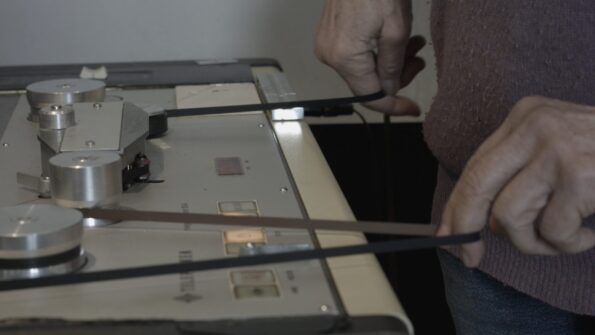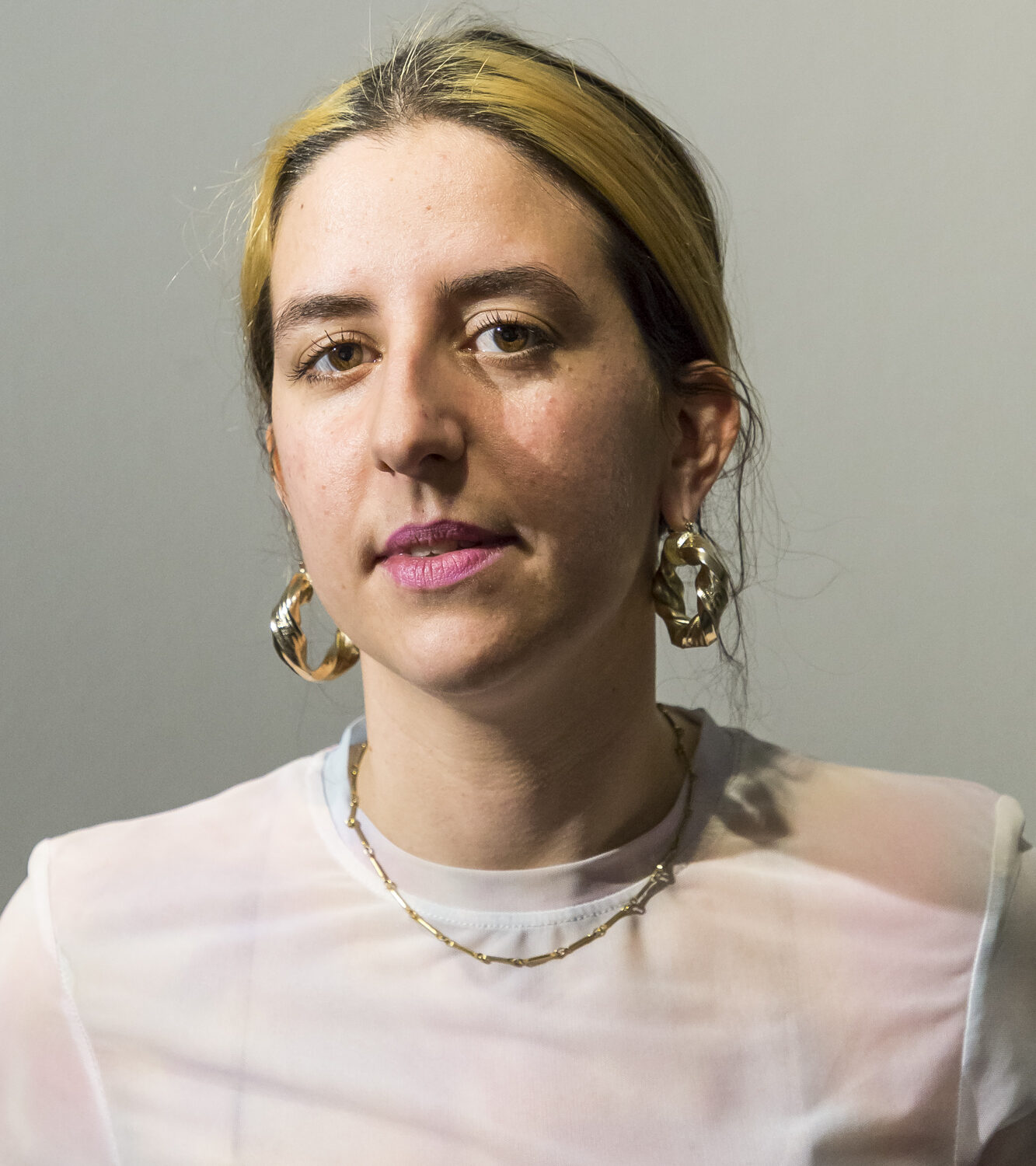Search
To search for an exact match, type the word or phrase you want in quotation marks.
A*DESK has been offering since 2002 contents about criticism and contemporary art. A*DESK has become consolidated thanks to all those who have believed in the project, all those who have followed us, debating, participating and collaborating. Many people have collaborated with A*DESK, and continue to do so. Their efforts, knowledge and belief in the project are what make it grow internationally. At A*DESK we have also generated work for over one hundred professionals in culture, from small collaborations with reviews and classes, to more prolonged and intense collaborations.
At A*DESK we believe in the need for free and universal access to culture and knowledge. We want to carry on being independent, remaining open to more ideas and opinions. If you believe in A*DESK, we need your backing to be able to continue. You can now participate in the project by supporting it. You can choose how much you want to contribute to the project.
You can decide how much you want to bring to the project.

When I visited “Attuning” exhibition, I came across an old woman with her daughter, sitting in front of the piano, available to the public on the ground floor of the Museu de la Música. The woman was in a wheelchair, wearing sunglasses and smiling as her hands remembered the notes had most likely learned a long while ago. The piano continued playing as I ascended through the stairs. I thought of my grandmothers who had barely learned how to read and write, but whose hands found no chore in sewing. While I write about my grandmothers I am reminded of Carolina Jiménez’s words, explaining how she disagrees with certain heroizing tales, used to introduce the artists portrayed by Aura, through the genealogy of electronic and electroacoustic music. A genealogy that, according to her, will still be patrilineal, even if it shall include the names of cis and trans women, since her storytelling ways serve a logic of individual authorship, of discovery as a feat, of progressive temporality, very far removed from the ways in which, for example, Aura works.
Ursula K. Le Guin explains how Virginia Woolf replaced the word ‘heroism’ with ‘botulism’, meaning toxic infection, in her glossary, and ‘hero’ with ‘bottle’. In her famous carrier-bag theory regarding the origin of fiction, Ursula wants to tell us a different story: “We’ve all heard all about all the sticks spears and swords, the things to bash and pole and hit with, the long, hard things, but we have not heard about the thing to put things in, the container for the thing contained[1]Ursula K. Le Guin, «La teoría de la bolsa como origen de la ficción», consulted in: La_teoria_de_la_bolsa_como_origen_de_la_ficcion_UrsulaKLeguin.pdf (oficiosvarios.cl). In English: “The … Continue reading”. Hence, she wants to share the story humanity hid from her, the story that presumes the first cultural device to ever exist to most likely be a container. And, on one side we have the bowl and on the other one, the loom. Archeologist Elizabeth Wayland Barber also warn us about how when imagining past technologies, we think of hard materials such as stone or metals, while forgetting about the soft and organic ones, which probably characterized the technologies from eras prior to the Paleolithic. Hence, the bowl and the loom suggest another way of conceiving sociotechnical imaginaries, not influenced by the cismasculine fantasy of conquest and control. “The man-scientist, acts upon a passive object, matter giving it form and bending it to his own will. (…) Everything that is perceived as ‘other’—that is, in some way, ‘less human’—becomes an object of domination and violence[2]Laura Tripaldi, Parallel Minds: Discovering the Intelligence of Materials, MIT Press, United Kingdom, 2022”
When paying careful attention to who at some point in the films, both Laurie and Beatriz caress the magnetic tapes, we do not perceive a possessive relationship but a rather coextensive one, an introjected alterity rather than assimilated. I imagine this difference could resemble the difference between riding a horse with or without reins or saddle, solely by resting one’s hands on the animal’s limbs, trusting the contact and hearing between both mammals. Hence, I want to propose that the way Aura Satz films her admired Daphne Oram, Laurie Spiegel and Beatriz Ferreyra, answers to this same sensibility, and acquires the shape of both the loom and the bowl.
In ‘Oramics: Atlantis Anew’ we find what used to be Daphne Oram’s studio, and the camera moves around as if it were a dog sniffing the place. We see the inscriptions the artist left behind on her instruments and machines. Since she is not alive, Aura stops at all the details that could bring Daphne’s body as she interacts with her devices to the present time. Even if most of the shots are static, I cannot help but project a choreography of Daphne’s likeness pressing a button or, leaning, or moving through the studio. The closeup shots seem to answer to the decision of not presenting a totalizing image, while ensuring that this fragmentation did not isolate the elements, but instead revived them, drawing the outline of the ecosystem. When, in the video, the Oramics instrument is activated, I identify the artist with its invention and I am moved by the strokes her hands drew on the roll film, later to be read by photoelectric cells and to be transformed into sound. I have always believed that electric systems are magic means through which ghosts appear. And it is no coincidence that, by the end of the XIX century and the beginning of the XX century, the invention of the telegraph, the telephone, the photograph, the electromagnetism… happened while spiritism and occult sciences were at their peaks. Hence, I ask myself whether Aura is not adopting, throughout this first homage, not only the role of a filmmaker but also of a medium.
“Little Doorways to Paths not Yet Taken” starts with a sequence shot that follows the lines drawn by Laurie Spiegel’s studio cables. Although in this case, she is still alive, when watching the video right after the previous one, those cables together with her words, telling us about other contacting ways, make me think about those who are no longer with us. Through this, Daphne is yet again summoned together with Laurie, in this sort of chosen family portrayed by Aura. For Karen Barad, when it comes to physics, tough is radically queer: two bodies finding each other, not simply bumping into one another, but rather complementing and determining each other. That is why this video and the following one, “Making a Diagonal with Music” show the hands of their main characters with their instruments and machines, so as to, as Laurie says, revive them, as a radical aperture to multiple beings, times and spaces. The closeup shots repeat themselves as a way of retelling another story, just like with the bowl and the loom. They tell us about technologies instigated by the desire to contain, link and tell stories.
The sound feels like otherworldly traces and the instrument is played to summon them. Like how the camera barely passes through the archive Aura records, since the material legacy of Laurie Spiegel is not registered as a past event, but rather it is activated, superimposing film language onto different words, music notations and codes the camera finds. Daphne, Laurie, Beatriz, and Aura go beyond the given language framework, just like how Ursula K. Le Guin goes beyond the story told, and they build their own ‘machines’ to enable other ways of contact. The warm intimate feeling of the encounter being filmed, breached Laurie’s studio and Breatriz’s house to later sneak into this room of the Museu de la Música where I am sitting. I realize I do not remember the last time I listened carefully to what an old woman had to say. And I think of my grandmother, no longer with us, and my other grandmother, who has long lost her memory, and I try to imagine what they would have felt had they heard the music of Daphne, Laurie, and Beatriz.
(Cover photo: Aura Satz. Make a diagonal with the music, 2019)
Aura Satz. ‘Attuning’
Until January 7 at the Museu de la Música de Barcelona, L’Auditori. Lepant, 150, 08013 Barcelona
| ↑1 | Ursula K. Le Guin, «La teoría de la bolsa como origen de la ficción», consulted in: La_teoria_de_la_bolsa_como_origen_de_la_ficcion_UrsulaKLeguin.pdf (oficiosvarios.cl). In English: “The Carrier Bag Theory of Fiction”, consulted in: https://otherfutures.nl/uploads/documents/le-guin-the-carrier-bag-theory-of-fiction.pdf |
|---|---|
| ↑2 | Laura Tripaldi, Parallel Minds: Discovering the Intelligence of Materials, MIT Press, United Kingdom, 2022 |

Marta Echaves (Madrid, 1990) trained in Philosophy and in the Independent Studies Programme at MACBA. She researches, writes and coordinates activities at the Caja Negra publishing house. Her long-term projects are developed in different formats and focus on domestic archives, anecdotes and oral history in order to generate poetic devices of memory through metaphors associated with a specific period.
"A desk is a dangerous place from which to watch the world" (John Le Carré)